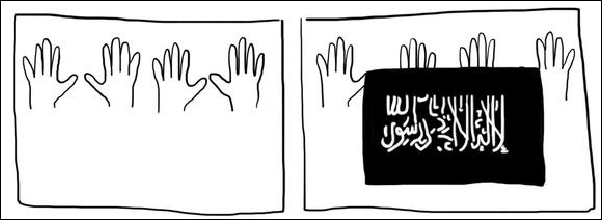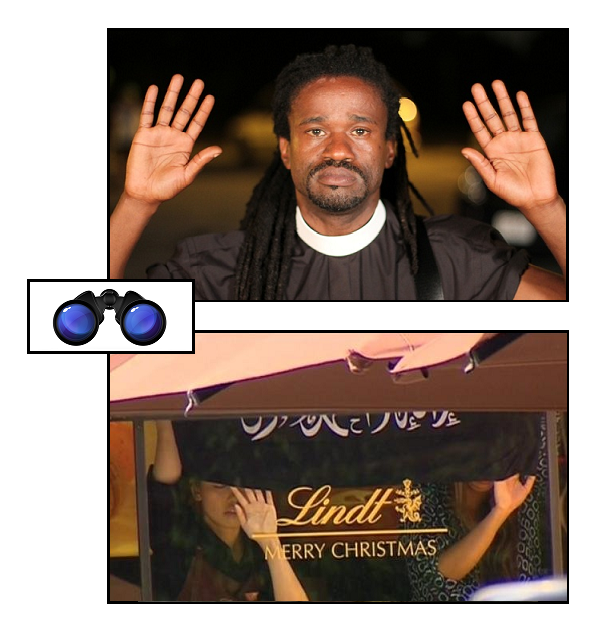[ by Charles Cameron — feeling kinship with the cartoonist who calls himself Ardeet ]
.
**
As my regular readers know by now, I have a “form” I use for juxtaposing ideas — verbal, visual, and even mathematical on occasion — that I term DoubleQuotes, and I believe that juxtaposition, whether it be used to make a point of raise a question, is a standard feature of human thinking and a very powerful rhetorical device, yet little explored, critiqued, explained and appreciated.
In my view, when humans consistently use a certain way of doing things on many otherwise unrelated occasions, it’s a good bet that “sharpening” that way of doing things into a tool — making a point of it, if you like — will result in both practical and educational benefit.
Thus when I spot others using juxtapositions in a similar way, I call them DoubleQuotes in the Wild. They are an inspiration to me, confirming my hunch of the general utility and ongoing prevalence of the DQ principle.
**
Here, then, is a “DQ in the Wild” from cartoonist Ardeet:
That’s powerful, the suggestion being that the world press takes an event where there’s a suggestion of possible jihadist involvement (“terrorism”) a lot more seriously than one where that is not the case (“spree killing”). While the hostage situation was playing out in Sydney, for instance, a US vet killed “his ex-wife and five of her relatives” in Pennsylvania, drawing far less media interest.
**
I could see how Ardeet’s cartoon could be read in that sense, but I wasn’t sure how he intended it, having been exposed recently to dozens of images of hands raised as a sign of the Ferguson protests.
A somwhat different pairing therefore suggested itself to me, one with a different emphasis:
Here the point is not that an event moves from local to global interest when the jihadist’s black banner appears, but that the hostage-taking in Sydney offers a curious and ironic (albeit unintended) take on one of the chief symbols of the protests in and about Ferguson, while the Ferguson protest gesture adds resonance to the image of hostages forced to hold up the black banner in Sydney.
**
I have been talking about the “black banners from Khorasan” hadith an its Mahdist implications online since 2007 if not earlier, and on Zenpundit since September 2009, and I think a clarification is in order at this point.
The flag in the image from the Lindt cafe is not in fact the Daesh / Islamic State flag, and indeed the hostage-taker appears to have asked for a genuine Daesh / IS flag as one of his demands. The flag shown is a black flag containing the Shahada or Islamic profession of faith in white, and black flags in Islam have a history as war flags dating back to the time of the Prophet himself.
Two tweets from Aaron Zelin will clarify the matter visually:
This is The Islamic State flag, not the one in the window in Sydney. pic.twitter.com/PV3UNuGCms
— Aaron Y. Zelin (@azelin) December 14, 2014
This is flag currently held in Sydney window, a garden-variety Islamist flag. Therefore, doesn’t tell us anything yet pic.twitter.com/DgC6wIsE47
— Aaron Y. Zelin (@azelin) December 14, 2014
**
More on this in Black Banners in Sydney 2: on flags and their meanings.





